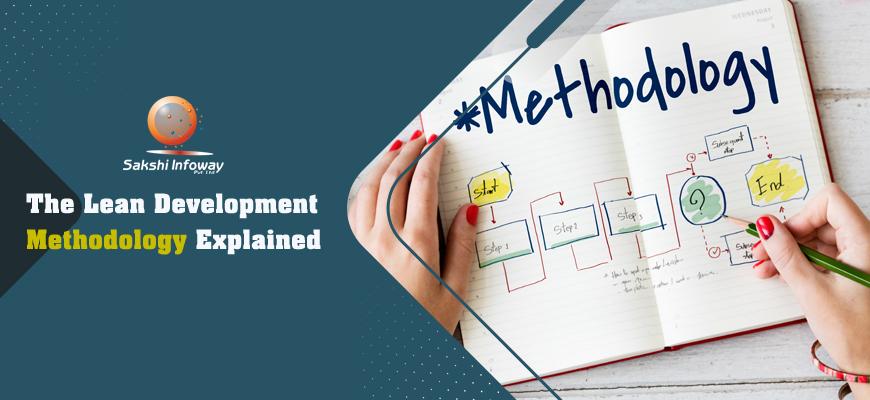The Lean Development Methodology Explained

The Lean Development Methodology is a software development process which emphasizes the importance of flexibility, responsiveness, and rapid iteration to improve both the quality of the delivered software and the speed of delivery. In this article we will explore how Lean Software Development is applied in practice by examining topics such as business value, quality, waste, and tools.
Introduction to Lean Software Development
Lean software development is a methodology for developing software that emphasizes efficiency and the elimination of waste. The goal of lean software development is to create more value for the customer with less work.
The lean software development methodology is based on the principles of the Toyota Production System, which is a system of manufacturing that emphasizes quality control and continuous improvement. The lean software development methodology has been applied to many different types of businesses, including software development.
The lean software development methodology was first proposed by Mary Poppendieck and Tom Poppendieck in their book, “Lean Software Development: An Agile Toolkit”. The Poppendiecks identified seven wastes that are common in software development:
1. Partially Done Work: Work that is started but not finished. This waste includes features that are added to the product but are never used, as well as code that is written but never used.
2. Defects: Bugs or errors in the software that need to be fixed.
3. Overproduction: Creating more features or code than is needed. This waste can happen when developers create features that are not used by customers or when developers write code that is never used.
4. Waiting: The time that a developer spends waiting for code to compile or tests to run, as well as the time that customers spend waiting for a new product.
5. Underutilized People: Employees who are not working at full capacity because of understaffing
6. Extra Processing: Extra processing that is added to the software but is not needed. This includes features that are not used and code that has been put in simply to make it more difficult to change in the future.
7. Defects: Bugs in the software code that need to be fixed.The Poppendiecks also identify two organizational wastes:
8. Unused Skills: Skills of employees who are not being used because an organization lacks effective processes.
The Problem
There’s a lot of talk these days about the lean development methodology. What is it? How can it help your business? In this blog post, we’ll take a closer look at the lean development methodology and how it can help you streamline your processes and become more efficient.
We all know that businesses need to constantly evolve to stay ahead of the competition. But sometimes, companies can get bogged down in inefficient processes that don’t lead to any real progress. That’s where the lean development methodology comes in.
Lean development is all about streamlining processes and eliminating waste. It’s about doing more with less, and making sure that every step in the process adds value for the customer.
In order to achieve this, lean developers focus on three key areas: Lean thinking, agile methods, and continuous delivery.
Lean thinking is all about focusing on customer value and eliminating waste. Agile methods help developers respond quickly to change and deliver working software quickly. Continuous delivery helps businesses deploy new features and updates rapidly and efficiently.
When these three elements are combined, they create a powerful tool for businesses that want to streamline their operations and become more efficient. If you’re looking for ways to improve your business, consider shifting toward the lean approach.
Three Fundamental Lean Concepts
The Lean Development Methodology is a process that helps organizations streamline their operations and become more efficient. The three fundamental concepts of Lean are:
1) Continuous Improvement: Lean is all about continual improvement. Organizations should constantly strive to identify ways to eliminate waste and improve efficiency.
2) Respect for People: Lean recognizes that people are the most important asset in any organization. lean management techniques seek to empower workers and involve them in decision-making.
3) Focus on the Customer: The ultimate goal of Lean is to provide value to the customer. Every decision made should be based on what will best meet the needs of the customer. That’s the basic gist of it. I’ll go through each of those points in more detail in the coming sections.
The first concept on the list is continuous improvement. The idea behind this concept is that Lean organizations always seek to improve and evolve, rather than being complacent and stagnant. They are never satisfied with their current state and are constantly looking for new ways to innovate and get better.
Development Process Steps Analysis, Design, Implementation and Validation
The Lean Development Methodology is a process that helps developers create high quality software products efficiently and effectively. The steps in the process are: development process steps analysis, design, implementation and validation. By following these steps, developers can create software products that are of high quality and meet customer expectations.
Conclusion
I hope this article has given you a better understanding of the lean development methodology and why it might be something worth considering for your business. The lean development methodology is all about constantly improving and streamlining your processes to become more efficient and effective. If you’re serious about taking your business to the next level, then implementing a lean development strategy could be the key to success.

Comments
Post a Comment